 February 26, 2015 John E. Ross, KD8IDJ, Editor
| |||||||||||
ARRL Seeks Member Input on Draft HF Band Plan Proposals The ARRL is asking members to comment by April 19 on possible changes to the League's HF Band Plans suggested by the HF Band Planning Committee. The survey is part of the committee's efforts to tweak the band plans for the RTTY/data/CW portions of 80 through 10 meters -- excepting 60 meters. The committee developed its suggested revisions to the voluntary band plans after reviewing some 400 member comments in response to a March 2014 solicitation that sought suggestions on how to use the spectrum more efficiently, so that data modes may coexist compatibly. "The committee concluded that most of the concerns voiced by members could be addressed by modest adjustments to the existing band plans, and mainly by confining data modes with bandwidths greater than 500 Hz to the FCC-designated segments for automatically controlled digital stations (ACDS) and to parts of the RTTY/data subbands above those segments," ARRL CEO David Sumner, K1ZZ, said. His article detailing the committee's suggestions will appear in the April issue of QST. The proposed changes differentiate among ACDS, narrow RTTY/data modes having a bandwidth no greater than 500 Hz, and wider data modes having a bandwidth up to 2700 Hz. Band-by-Band Draft Recommendations On 80 meters, the committee suggests several modifications to the band plan. FCC action in 2006 reduced the 80 meter RTTY/data subband to 100 kHz and limited access to the 3600-3700 kHz segment to Amateur Extra class licensees. "Unless and until the FCC Rules are modified, changes in the band plan for 3500-3600 kHz will not improve the situation," Sumner said.
On 40 meters, the committee concluded that it would be unrealistic to try to bring the ARRL band plan into alignment with the rest of the world, particularly with Regions 1 and 3 where operating patterns developed when the entire band, including phone, was just 100 kHz wide -- and is still only 200 kHz. While 7040 kHz is a recognized RTTY/data DX frequency in the band plan, the best place for other RTTY/data activity in the US is above 7070 kHz.
On 30 meters, the committee recommends confining wide data modes to 10.140-10.150 MHz, separated from other RTTY/data at 10.130-10.140 MHz. On 20 meters, the committee recommends using the 1 kHz IARU/NCDXF beacon network frequency (14.0995-14.1005 MHz) as a line in the sand between wide ACDS in the 14.1005-14.112 MHz segment, and narrow ACDS in the 14.095-14.0995 MHz segment.
On 17 meters, the committee recommends confining wide data modes to the FCC-mandated ACDS segment of 18.105-18.110 MHz, separated from narrow RTTY/data at 18.100-18.105 MHz. FCC rules do not permit RTTY/data above 18.110 MHz, limiting options for this band. On 15 meters, the committee recommends that 21.070-21.090 MHz for narrow RTTY/data modes, the FCC-mandated ACDS segment of 21.090-21.100 MHz for both narrow and wide automatically controlled data station activity, and above 21.100 MHz for any additional wide data activity. The ARRL Board also wants members to comment on the desirability of adding RTTY/data privileges for Novices and Technicians in their existing 15 meter segment, where they're now limited to CW. On 12 meters, the committee recommends confining wide data to the FCC-mandated ACDS segment, 24.925-24.930 MHz, separated from narrow RTTY/data operation at 24.920-24.925 MHz. FCC rules do not permit RTTY/data operation above 24.930 MHz, limiting options for this band. On 10 meters, the committee recommends that wide data be confined to the FCC-mandated ACDS segment, 28.120-28.189 MHz, separated from narrow RTTY/data modes at 28.070-28.120 MHz. How to Comment The League has set up a web page to record members' preferences and comments, which includes links to the HF Band Planning Committee report to the ARRL Board and to Sumner's April QST article (and high-resolution band charts). Those wishing to offer more detailed comments may e-mail ARRL. The comment deadline is April 19. The HF Band Planning Committee will deliver its final report at the ARRL Board of Directors' July meeting. ARRL Partners with Liberty Mutual to Offer Home, Auto Insurance Discounts ARRL and Liberty Mutual Insurance have reached an agreement to provide League members with home and automobile insurance discounts. In the past, this membership benefit was provided by MetLife. Under the affinity arrangement, a portion of each premium comes back to ARRL.
Petrilli assured members who already have home or auto insurance through the League's arrangement with MetLife that their coverage will continue, but, she added, when the current policy comes up for renewal, the ARRL group discount may no longer apply.
Savings and discounts are available where state laws and regulations allow, and may vary by state. To the extent permitted by law, applicants are individually underwritten, and not all applicants may qualify. Policies are underwritten by the Liberty Mutual Insurance Company and its affiliates, 175 Berkeley St, Boston, MA 02116. In addition to auto and home insurance, Liberty Mutual offers life, motorcycle, condo, renter's, and personal liability insurance. Liberty Mutual representatives can discuss options and recommend coverage. To learn more, call 800-524-9400 or visit the Liberty Mutual website. When contacting Liberty Mutual, ARRL members should request group savings and discounts offered to members of the "American Radio Relay League." Joseph Palsa, K3WRY, Appointed as Virginia Section Manager Joseph Palsa, K3WRY, has been appointed Virginia Section Manager. An ARRL Life Member from Richmond, Palsa succeeds Carl Clements, W4CAC, of Portsmouth, who has stepped down due to increased work commitments. Palsa's appointment is effective
immediately. ARRL Field Services and Radiosport Manager Dave Patton, NN1N, made the appointment of Palsa in consultation with ARRL Roanoke Division Director Dr Jim Boehner, N2ZZ. Clements had been the Virginia Section Manager since 2008. He also had served in the post from 2001 until 2006. Palsa will complete the current term of office, which continues until March 31, 2016. An Amateur Radio operator for more than 50 years, Palsa has been serving as Virginia State Government Liaison. During 2014, he was president of the Richmond Amateur Radio Club. In past years, he has held ARRL Field Organization positions as Official Bulletin Station, Official Observer, and Official Emergency Station. Active in ARES, he has received two ARRL Public Service Awards. Palsa enjoys DXing, contesting, and public service communication. Two New ARRL Section Managers Will Take Office on April 1 Wyoming and Kentucky will be getting new ARRL Section Managers on April 1, while incumbents in several other sections have been re-elected for new terms. Ballots in contested elections in the winter Section Manager election cycle were counted on February 24 at ARRL Headquarters. Several candidates in this cycle ran unopposed. In Wyoming, challenger Jack Mitchell, N7MJ, of Cheyenne, will be the new Section Manager. He received 125 votes to 108 votes for incumbent Wyoming SM Garth Crowe, WY7GC, of Gillette. Crowe has served as SM since January 2009.
The Kentucky Section will also have a new Section Manager starting in April. Alan Morgan, KY1O, of Paris was the only nominee for the position. An ARRL Life Member for more than 30 years, Morgan has held several leadership posts, including District Emergency Coordinator, Emergency Coordinator, and net manager, and has served as an ARRL-affiliated club president. Outgoing SM Jim Brooks, KY4Z, decided not to run for another term after being at the helm in Kentucky since 2007. In other contested races, two incumbent SMs prevailed over their challengers. In Arizona, Robert Spencer, KE8DM, of Yuma, outpolled Steven Wood, W1SR, of Tucson, 775 to 464. In Iowa Section Manager Bob McCaffrey, K0CY, of Boone also was re-elected, defeating challenger Scott Kirstein, N0OOD, of Ankey, 402 to 127. Spencer and McCaffrey both have served since 2013 and will be starting their second terms in April. Several other incumbent Section Managers faced no opposition in this election cycle and have been declared re-elected. They are Dale Temple, W5RXU (Arkansas); Malcolm Keown, W5XX (Mississippi); George Forsyth, AA7GS (Montana); Chris Brewer, N5GMJ (North Texas), and Carl Gardenias, WU6D (Orange). No One in the Shack as Station Logs 4200+ Contacts in ARRL DX CW Contest The six-person group operating as K3TN in the recent ARRL International DX Contest (CW) may have made Amateur Radio history by mounting the first completely remote-controlled multioperator contest effort. The scattered K3TN team worked via the Internet through the station of Jack Hammett, K4VV, on Catoctin Ridge in Northern Virginia. All of K4VV's operating positions were vacant over the February 21-22 weekend, because the operators were elsewhere. One participant even managed to operate during the contest from two states -- Maryland and Florida.
"No one was in the K4VV shack for the entire contest!" said Mike Lonneke, W0YR, who took part in the contest via K4VV from his own shack in Virginia. Two other operators were in North Carolina. "Perhaps this is a new category -- Totally Remote (TR)." Lonneke said 3-minute timers at the remote-capable positions allow FCC requirements to be met. The "Team K4VV" contingent made 4224 contacts and logged 556 multipliers for a claimed score of more than 7 million points -- not a Top 10 score, but respectable. For comparison, the top-scoring K3LR multi-multi operation has claimed 18.85 million points. K4VV boasts two Telrex "Big Bertha" rotating masts that support 17 wide-spaced Yagi arrays for 10, 15, and 20 meters and a two-stack of four-element OWA Yagis on 40, plus wire antennas for 80 and 160 meters. This is not the sort of antenna farm likely found in the typical suburban neighborhoods from which the K3TN participants operated. Despite the vagaries of winter weather, the station performed well. "We had a foot of wet snowfall Saturday afternoon/evening, and the station was totally inaccessible," said John Pescatore, K3TN, in a 3830 website log post. "The ops fairly winced as they watched the on-screen direction indicators for K4VV's Big Berthas turn at a tortoise's pace in the near zero-degree cold. But, turn they did. The station played great, and band conditions were, across the board, good."
Lonneke said one member of the ARRL DX CW team, Bill Rogers, W3UL, started the contest from his home in Maryland, before taking the auto train to Florida and rushing to his condo to finish up. Team K4VV, a group of more than 20 operators, helps to maintain and operate the station, which has become a real-world laboratory in the to-date niche field of remotely controlled contesting. "Jack's [K4VV] health is not the best," Lonneke noted, "but he is happy to see his station -- an outstanding facility -- used and maintained by a group of his Amateur Radio friends." Three of K4VV's well-equipped operating positions can be operated either from within the shack or via remote control from anywhere in the world. In 2013 ARRL November Sweepstakes (CW), Tom Morton, CX7TT, who lives in near Montevideo, Uruguay, logged into one of the K4VV operating positions. Operating as W4YY at a distance of nearly 5200 miles, he managed a clean sweep. Lonneke has said that the operating experience from the remote end "is transparent."
Until recently contacts made during such operations were ineligible for DXCC credit for either station. Changes to the DXCC Rules now allow a control operator to be outside the DXCC entity in which the radio transmitter/receiver is located. For DXCC purposes transmitter location continues to define a station's location. CQ Magazine recently began sponsoring an award for working 100 countries while using remote control. In addition to Pescatore, Lonneke, and Rogers, the K3TN operators for the ARRL International DX CW were Rick Miller, N1RM, in Virginia; Jim Gulvin, W4TMO, in North Carolina, and Rowland Archer, K4XD, in North Carolina. The K3TN log was submitted under the Potomac Valley Radio Club banner. Pescatore is hoping to gather a team of phone operators to mount a similar multi-multi effort in the ARRL International DX Contest SSB event in March. There's a Place for You in the ARRL International DX Phone Contest! Set aside your CW key, and shake those dits and dahs out of your ears. It's time to get your voice in trim or to program your digital voice keyer. The SSB weekend of the ARRL International DX Contest is Saturday and Sunday, March 7-8 (UTC), and in this major event on the radiosport calendar, the DX will be looking for stations in the US and Canada. There are entry categories for single ops and for multioperator teams as well as a choice of power levels in each category, from QRP to full legal limit. In other words, there's a place for Big Guns, Little Pistols, and everyone in between. Excitement and enthusiasm levels will be high, and it's a terrific opportunity to boost DXCC totals too.
Not only that, but the ARRL International DX Contest events offer great opportunities to expand your knowledge of MF and HF propagation and to tweak your contesting skills. The basic objective is simple: W/VE amateurs work as many DX stations in as many DXCC entities as possible on the 160, 80, 40, 20, 15, and 10 meter bands. Participating DX stations work as many stations as possible on the 48 contiguous US states and Canadian provinces. US and Canadian stations send a signal report and their state or province abbreviation. DX stations send a signal report and their output power. The action gets under way March 8 at 0000 UTC (Friday, March 7, in US time zones) and continues for the next 48 hours until March 9 at 2359 UTC. By the way, if you're planning to do this one without any digital voice assistance, keep those lozenges and maybe some hot tea and honey handy. A couple of 2014 participants complained afterward of hoarse throats. Complete rules and forms are on the ARRL website. E-mail electronic logs (Cabrillo format). Mail paper logs to ARRL DX CW Contest, 225 Main St, Newington, CT 06111. Logs must be received or postmarked no later than 2359 UTC on Tuesday, April 8, 2015. Spacewalks Interrupt ISS Amateur Radio SSTV, School Contact Schedules Spacewalks recently disrupted previously scheduled Amateur Radio on the International Space Station (ARISS) activities. ISS crew members Barry Wilmore, Terry Virts, and Samantha Cristoforetti, IZ0UDF, worked outside the ISS on February 21 and 25, and another "extra-vehicular activity" or EVA -- NASA's term for a spacewalk -- is set for March 1. During such excursions, Amateur Radio gear on the ISS is shut down for safety reasons.
In addition, an ARISS school contact scheduled for February 25 with students at Riversink Elementary School in Crawfordville, Florida, had to be rescheduled for the following day. Over the course of the series of spacewalks, the astronauts have been preparing cables and communication gear for new docking ports that will allow future crews launched from Florida on US commercial spacecraft to dock with the space station. Paulo, PV8DX, of AMSAT-Brazil turned the latest series of SSTV transmissions into an educational outreach opportunity. During a
February 23 visit to the Gonçalves Dias School, he explained Amateur Radio to the students and demonstrated reception of an SSTV image from the ISS. Although the signal wasn't strong enough to render a clear and complete image, he was able to capture at least part of it, and the students were excited and enthusiastic. Paulo said he's hoping for more ISS SSTV transmissions on weekdays, when youngsters are in school. Clint Bradford, K6LCS, in California, found that receiving SSTV images from the ISS can really be simple. He used loaded a $3 iOS app onto his iPod Touch and held the device near the speaker of his VHF transceiver. "I didn't think there was too much left in the hobby to excite me, but I was wrong," he said. Greg Dolkas, KO6TH, was equally enthusiastic. "I've never received a clearer SSTV picture from anywhere, let alone outer space!" he said. -- Thanks to ARISS, AMSAT-UK Australian Hams Respond Following Severe Weather Amateur Radio volunteers with Australia's Central Queensland Amateur Radio Association (CQARA) initiated nets on HF and VHF in the wake of a tropical cyclone (hurricane). After making landfall on February 20, Cyclone Marcia caused major damage, ripping roofs from structures, downing trees and power lines, and damaging other infrastructure. Flooding was widespread. The cyclone was a category 5 storm with winds of 155 MPH when it hit Yeppoon. It lost intensity as it slowly moved south, and was downgraded to a Category 1 storm.
Jim Linton, VK3PC, the chairman of IARU Region 3's Disaster Communications Committee, said no deaths were reported due to the storm. "During previous major Queensland cyclones extensive agricultural crops were lost," he pointed out. A separate weather system dumped rain over southeast Queensland, including the capital of Brisbane, causing some localized flooding. Elsewhere in Australia, Cyclone Lam, initially a Category 4 storm, engulfed the northeast region of the Northern Territory. Linton said that early evacuation of lightly populated islands and sheltering of residents were effective. German Radio Amateurs Breathe New Life into "Orphaned" Shortwave Channel A few radio amateurs are frustrated broadcasters, and when German national broadcaster the Deutsche Welle closed down a 500 kW shortwave broadcast transmitter near Munich, an entity headed and "After the demolition of one of the world´s biggest shortwave facilities of the Deutsche Welle last year, we managed to get an official radio broadcast license for the German Amateur Radio Club and have built up a shortwave transmitter with some parts of the old 500 kW transmitter from there," said DARC Radio Project Manager Rainer The Deutsche Welle used the 6070 kHz channel until mid-2013 for European transmissions. DARC Radio hopes to fund its operating expenses by leasing airtime. The DARC is a customer, and under its banner, a weekly Amateur Radio-oriented magazine of DARC news, contest schedules, DX information, interviews, DXpedition reports, market reviews, technical hints, and "some nice old music from the '70s and '80s" will debut on Sunday, March 22, at 1000 UTC, Englert told ARRL. The program will
be in German, but the RSGB has expressed interest in contributing English-language program segments, he said. The inaugural DX magazine will be repeated on Monday, March 23, at 1600 UTC. According to the DARC, the initial March 22 broadcast will air from a 100 kW transmitter in Austria, while the repeat broadcast on March 23 will emanate from Radio DARC's 10 kW transmitter near Ingolstadt, Germany. Rainer Ebeling, DB8QC, owns the official licensee -- Intermedicom GmbH (LLC). He repurposed parts from the driver stages as well as a few transformers from the former Deutsche Welle transmitter for DARC Radio's 10 kW transmitter. "The antenna is a low-hanging, simple dipole with a very high radiation angle, optimized for short-range coverage," Englert explained. The station easily covers much of Western Europe, he said, and also has been heard in Russia and elsewhere, including North America.
Although its license allows full-time service, the station has mostly been on the air from 0700 until 1700 UTC. The station airs "The Golden Days of Offshore Radio" weekdays at 0700-0900 UTC, with offerings that evoke the era of pirate stations RNI, Radio Caroline, Radio Veronica, and others. In fact, the Channel 292 brand recalls the Channel 192 pirate station of the 1960s and 1970s. It also airs programs in Dutch and Spanish. Englert said others, in addition to DARC, have been leasing airtime -- currently filling about 20 hours per week. DARC Radio's hourly rate is rock bottom -- about $17.50 US. "This rate really only covers expenditures like electric power and the write-off of the power amplifier," he said. "The transmitter sucks almost 40 kW out of the grid at 100 percent modulation." "The orphaned shortwave frequencies hardly interest anyone these days," allowed the DARC. "Not so radio amateurs, who will take advantage of these new possibilities to also get broadcasting licenses." All reception reports to Channel 292 will be answered with a QSL card. Outgoing cards will go out via the DARC QSL bureau. "Mega DXpeditions Honor Roll" Posted on GDXF Site Anyone who likes Top 10 lists or even statistics will find something to appreciate in the "Mega DXpeditions Honor Roll," compiled and posted by Jari Jussila, OH2BU, and Bernd Koch, DF3CB. At the very least, this resource will help to settle any arguments as to the accomplishments of any DXpedition that logged at least 30,000 contacts. The German DX Foundation (GDXF) is hosting the Honor Roll, which includes 221 Mega DXpeditions. Each listing provides a link to details of the DXpedition and QSL card image. Individual links sort the database on various categories, including such statistics as QSOs per day and Top 20 modes.
In terms of contact numbers, topping the list was the 2011 T32C DXpedition to Christmas Island in Eastern Kiribati. The 32-day operation, which boasted 41 operators, logged 213,090 contacts. By way of comparison, the 15 operators mounting the recent 15-day K1N DXpedition to Navassa put 139,702 contacts into the logbook, putting that operation in 9th place in terms of QSO numbers.
The average number of operators among the 221 listed operations was 11. The 2006 VU4AN DXpedition to Andaman and Nicobar Islands involved 69 operators -- the most of any DXpedition, although the 403T DXpedition to Montenegro that same year came close, with 60 operators. One interesting statistic you can glean from the Honor Roll is most-activated DX entities among the 221 listed Mega DXpeditions. The greatest number was six operations to Conway Reef (3D2C). Spratly, Clipperton, Malyj Vysotskij, and Myanmar were grouped as a close second with five DXpeditions each. Most contacts made during a single-operator DXpedition? That would have been the 53,849 QSOs that Jukka Heikinheimo, OH2BR, logged as VP6BR during his 88-day visit to Pitcairn Island in early 2000. This has been recognized as a Guinness World Record. The Honor Roll also includes a list of the most active operators to take part in a Mega DXpedition. Address comments, corrections, or additions to the list to Jari Jussila, OH2BU, and Bernd Koch, DF3CB. -- Thanks to The Daily DX Nominations Sought for 2015 Amateur Radio Newsline Young Ham of the Year Award Amateur Radio Newsline is seeking nominations for its 2015 Young Ham of the Year (YHOTY) Award. To be considered, a nominee must have used Amateur Radio in some way that has benefited his or her community or encouraged technological development directly or indirectly related to communications.
Candidates considered for the Young Ham of the Year Award will be judged on their overall accomplishments and contributions -- especially in terms of public service activities or experimentation in the areas of science, technology, or electronic communication -- that may be of an outstanding nature. The decision of the judging committee is final. The deadline to submit an application is May 30, 2015. An application form also is available by sending a self-addressed, stamped envelope to 2015 Young Ham of the Year Award, c/o Amateur Radio Newsline, 28197 Robin Ave, Santa Clarita, CA 91350. Basic information on required documentation and how to file are included on the nominating form. Presentation of the 2015 Amateur Radio Newsline Young Ham of the Year Award will take place at the Huntsville Hamfest, August 15-16, in Huntsville Alabama. -- Thanks to Bill Pasternak, WA6ITF/Amateur Radio Newsline Astronaut-Ham John Grunsfeld, KC5ZTF, Named to Astronaut Hall of Fame NASA astronaut and Amateur Radio operator John Grunsfeld, KC5ZTF, is among those to be inducted into the Astronaut Hall of Fame this spring. The others are Margaret Rhea Seddon, Steven Lindsey, and Kent Rominger. They will join previous honorees, including Alan Shepard, Neil Armstrong, and John Young in a ceremony on May 30 at Kennedy Space Center. The 2015 inductees are the 14th class. All told, the group has recorded 18 space shuttle missions over 26 years. An astronomer and astrophysicist, Grunsfeld worked on the Hubble Space Telescope on three shuttle missions.
To date, fewer than 90 astronauts have been selected by a panel of their peers to join this elite group. Astronaut Hall of Fame inductees are selected from a pool of nominations, with the finalists chosen by a panel of Hall of Fame astronauts, NASA leaders, flight directors, historians, and journalists. For its inaugural class in 1990, the Hall of Fame inducted the original group of US astronauts -- the Mercury Seven. The Astronaut Hall of Fame features the world's largest collection of personal spaceflight memorabilia. It is operated as part of the Kennedy Space Center Visitor Complex. Now a NASA associate administrator for science, Grunsfeld is a veteran of five spaceflights. He logged more than 58 days in space and eight spacewalks. His first flight was in 1995 as part of the STS-67 shuttle mission aboard Endeavour. -- Thanks to AMSAT News Service via Spaceflight Insider The K7RA Solar Update Tad Cook, K7RA, Seattle, reports: Average daily sunspot numbers over the past week were about the same (59) as last week (54.6), while average daily solar flux declined from 121.4 to 116.3. Average daily planetary A index increased from 9 to 11.3. The average daily mid-latitude A index also was higher, rising from 7 to 9.3. These numbers compare the 7-day period from February 19-25 with the previous 7 days.
Predicted planetary A index is 10, 8, and 20 for February 26-28, then 22, 15, and 8 for March 1-3, then 10, 5, and 7 for March 4-6, rising back to 10 for March 7-8, down to 5 for March 9-13, then 10, and 5 for March 14-15, 15 for March 16-17, 8 on March 18, and 5 for March 19-21. John Magliacane, KD2BD, of Sea Girt, New Jersey, e-mailed a blast from the past -- some old e-mail from me, ARRL bulletins, and various posts from the late 1980s and early 1990s on Usenet and the Amateur Packet Radio Network, which he recovered from archives on an old hard drive. I hope to post some newly recovered ARRL Propagation Bulletins from 1990-1991. Let me know if you find any old archives such as this. This weekly "Solar Update" in The ARRL Letter is a preview of the "Propagation Bulletin" issued each Friday. The latest bulletin and an archive of past propagation bulletins is on the ARRL website. For Friday's bulletin, look for an updated forecast and reports from readers. Send me your reports and observations. -- Tad Cook, K7RA Just Ahead in Radiosport
See the ARRL Contest Calendar for more information. Upcoming ARRL Section, State, and Division Conventions and Events
Find conventions and hamfests in your area.
ARRL -- Your One-Stop Resource for . .
.
Subscribe to...
Free of charge to ARRL members...
| |||||||||||
 The HF Band Planning Committee recommends that the League petition the FCC to move the boundary between the 80 meter RTTY/data band and the 75 meter phone/image band from 3600 to 3650 kHz and restoring that segment to General and Advanced class licensees. Members are being asked to comment on this proposal, as well as on whether or not the ARRL should petition the FCC for these other changes:
The HF Band Planning Committee recommends that the League petition the FCC to move the boundary between the 80 meter RTTY/data band and the 75 meter phone/image band from 3600 to 3650 kHz and restoring that segment to General and Advanced class licensees. Members are being asked to comment on this proposal, as well as on whether or not the ARRL should petition the FCC for these other changes: The committee proposes aligning the band plan with the "Considerate Operator's Frequency Guide," with wide data modes -- outside of ACDS -- at 7115-7125 kHz. The "Guide" shows 7070-7125 kHz for RTTY/data, while the ARRL band plan shows 7080-7125 kHz. The FCC mandates that ACDS be confined to the 7100-7105 kHz segment.
The committee proposes aligning the band plan with the "Considerate Operator's Frequency Guide," with wide data modes -- outside of ACDS -- at 7115-7125 kHz. The "Guide" shows 7070-7125 kHz for RTTY/data, while the ARRL band plan shows 7080-7125 kHz. The FCC mandates that ACDS be confined to the 7100-7105 kHz segment. The committee recommends 14.070-14.095 MHz for RTTY and narrowband data, noting that so-called "weak-signal" data modes often are used between 14.070 and 14.078 MHz.
The committee recommends 14.070-14.095 MHz for RTTY and narrowband data, noting that so-called "weak-signal" data modes often are used between 14.070 and 14.078 MHz. "Liberty Mutual is an undisputed group-insurance affinity leader with excellent rates," said ARRL Membership Manager Diane Petrilli, KB1RNF. "Convenient support is available by phone, online, or one on one with a local sales representative, and with thousands of dedicated retail agents and hundreds of offices across the country." Given the ready access to Liberty Mutual's customer support, Petrilli said, it will be even easier for ARRL members to obtain quotes, begin coverage, and get answers to any questions.
"Liberty Mutual is an undisputed group-insurance affinity leader with excellent rates," said ARRL Membership Manager Diane Petrilli, KB1RNF. "Convenient support is available by phone, online, or one on one with a local sales representative, and with thousands of dedicated retail agents and hundreds of offices across the country." Given the ready access to Liberty Mutual's customer support, Petrilli said, it will be even easier for ARRL members to obtain quotes, begin coverage, and get answers to any questions.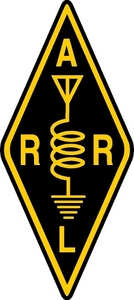 ARRL Marketing Manager Bob Inderbitzen, NQ1R, said that League members with existing Liberty Mutual policies should contact Liberty Mutual or their local agent directly to see if they qualify for additional ARRL group savings and discounts. He noted that savings under the new agreement could be substantial, and that members may save even more by bundling their home and auto coverage.
ARRL Marketing Manager Bob Inderbitzen, NQ1R, said that League members with existing Liberty Mutual policies should contact Liberty Mutual or their local agent directly to see if they qualify for additional ARRL group savings and discounts. He noted that savings under the new agreement could be substantial, and that members may save even more by bundling their home and auto coverage..jpg)
 A ham since 1973, Mitchell is an active ARRL Volunteer Examiner who enjoys exploring and operating new modes, attending hamfests, making new friends, contesting casually, and chasing DX. He currently serves as secretary of ShyWY Amateur Radio Club.
A ham since 1973, Mitchell is an active ARRL Volunteer Examiner who enjoys exploring and operating new modes, attending hamfests, making new friends, contesting casually, and chasing DX. He currently serves as secretary of ShyWY Amateur Radio Club.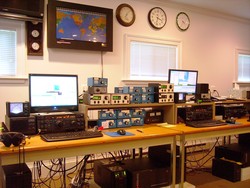
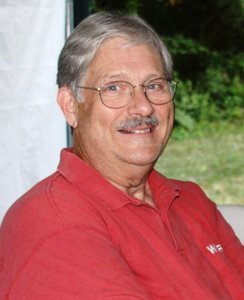
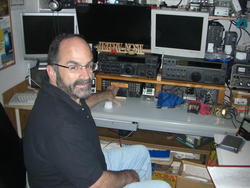
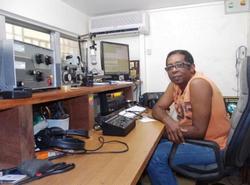
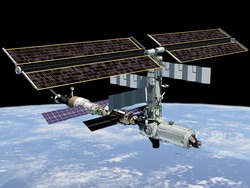 Over the past weekend, a planned 3 days of continuous slow-scan TV transmissions from the Russian sector ended up taking place only on February 22 and 23. The occasional SSTV transmissions from RS0ISS are on 145.800 MHz FM, using SSTV mode PD180.
Over the past weekend, a planned 3 days of continuous slow-scan TV transmissions from the Russian sector ended up taking place only on February 22 and 23. The occasional SSTV transmissions from RS0ISS are on 145.800 MHz FM, using SSTV mode PD180.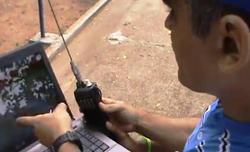
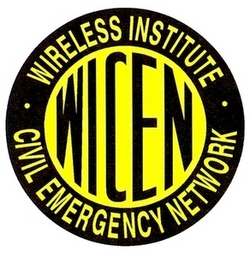 CQARA volunteers were reported active on 40 meters and 2 meters. Other Wireless Institute Civil Emergency Network (WICEN) groups stood by to help emergency responders. The few people who remained on Queensland's tourist coastal islands were evacuated to shelters. According to Australian news media, many residents were left without electricity, and power was expected to be off for several days. Emergency managers were asking residents to use water only when absolutely necessary. The Rockhampton Airport was closed due to flooding.
CQARA volunteers were reported active on 40 meters and 2 meters. Other Wireless Institute Civil Emergency Network (WICEN) groups stood by to help emergency responders. The few people who remained on Queensland's tourist coastal islands were evacuated to shelters. According to Australian news media, many residents were left without electricity, and power was expected to be off for several days. Emergency managers were asking residents to use water only when absolutely necessary. The Rockhampton Airport was closed due to flooding.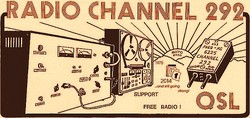 operated by hams applied for and was granted the vacant channel of 6070 kHz in the 49 meter shortwave band. DARC Radio -- which has a business association with the Deutscher Amateur Radio Club (
operated by hams applied for and was granted the vacant channel of 6070 kHz in the 49 meter shortwave band. DARC Radio -- which has a business association with the Deutscher Amateur Radio Club (.gif) Englert, DF2NU, an ARRL member and president of the Munich South Section of the DARC. "As far as we know, there is no similar ham project like this worldwide."
Englert, DF2NU, an ARRL member and president of the Munich South Section of the DARC. "As far as we know, there is no similar ham project like this worldwide."
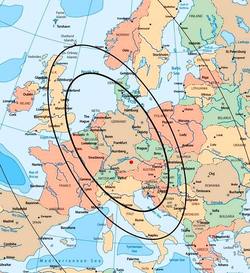
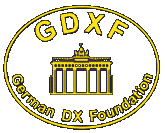 Jussila had kept and maintained records of DXpeditions making at least 30,000 QSOs and published his list, then containing some 40 DXpeditions, in the late 1990s. Requests to provide additional or corrected information helped to refine the list, which evolved into the Mega DXpeditions Honor Roll. Koch had compiled and maintained the database, which now has found a home on the GDXF website. The list includes statistics for individual DXpeditions.
Jussila had kept and maintained records of DXpeditions making at least 30,000 QSOs and published his list, then containing some 40 DXpeditions, in the late 1990s. Requests to provide additional or corrected information helped to refine the list, which evolved into the Mega DXpeditions Honor Roll. Koch had compiled and maintained the database, which now has found a home on the GDXF website. The list includes statistics for individual DXpeditions.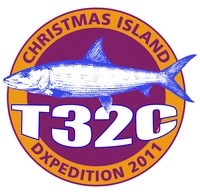
.jpg) Nominees must be no older than 19 and reside in the United States, Canada, or Puerto Rico. The individual must also hold a currently valid US or Canadian Amateur Radio license.
Nominees must be no older than 19 and reside in the United States, Canada, or Puerto Rico. The individual must also hold a currently valid US or Canadian Amateur Radio license.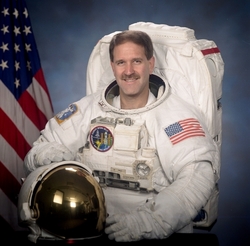
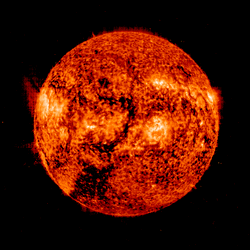 The
The 







